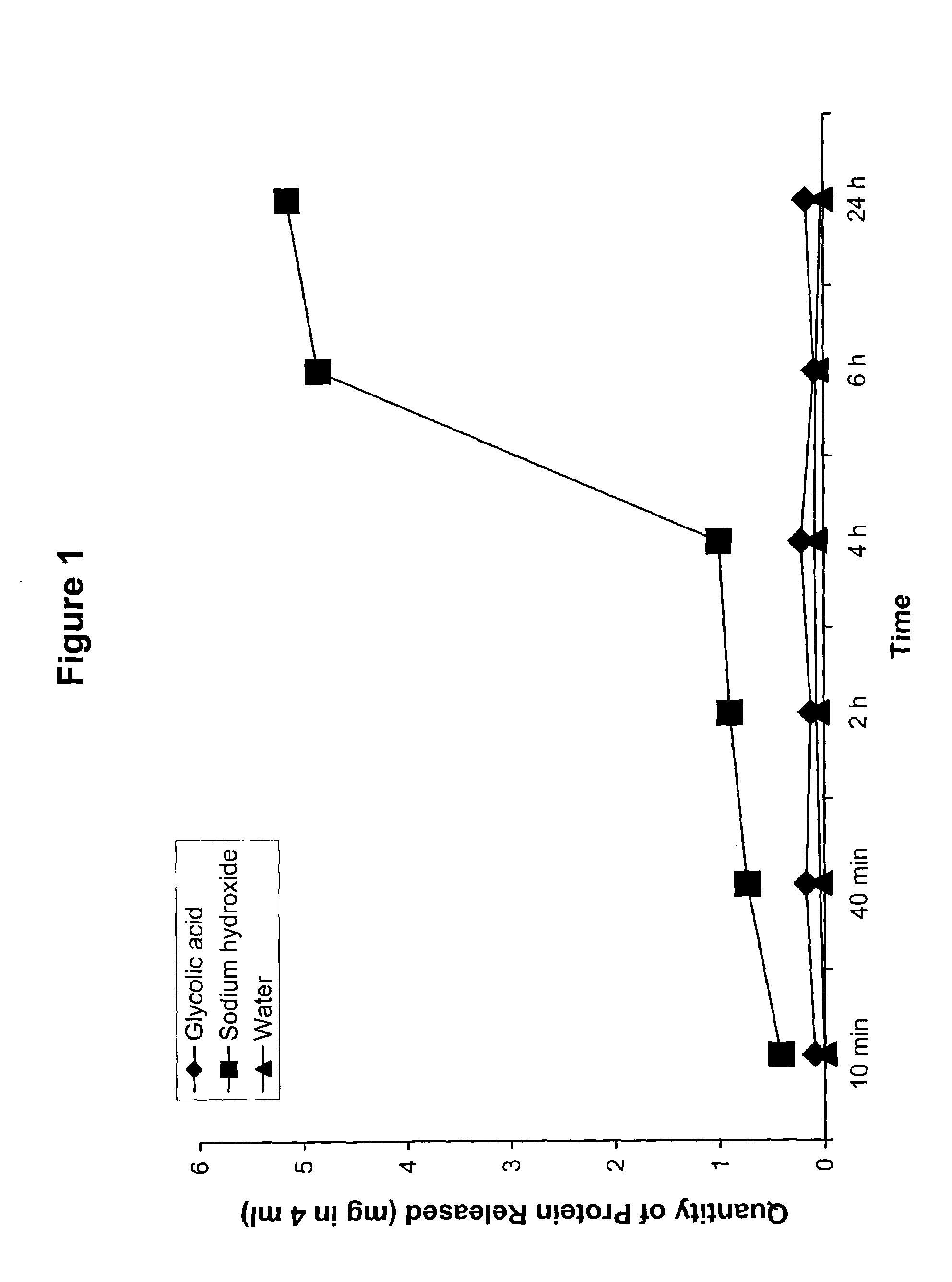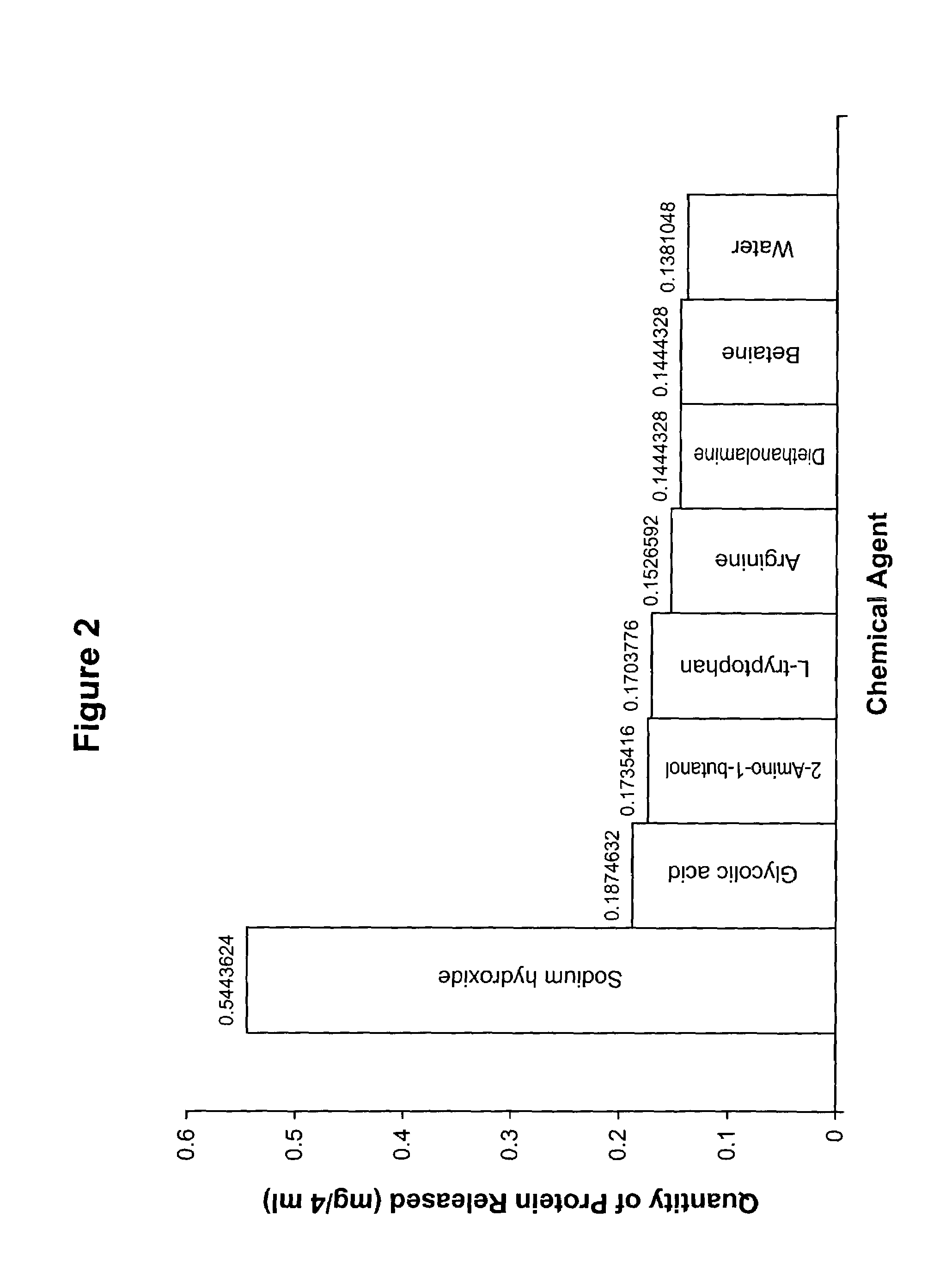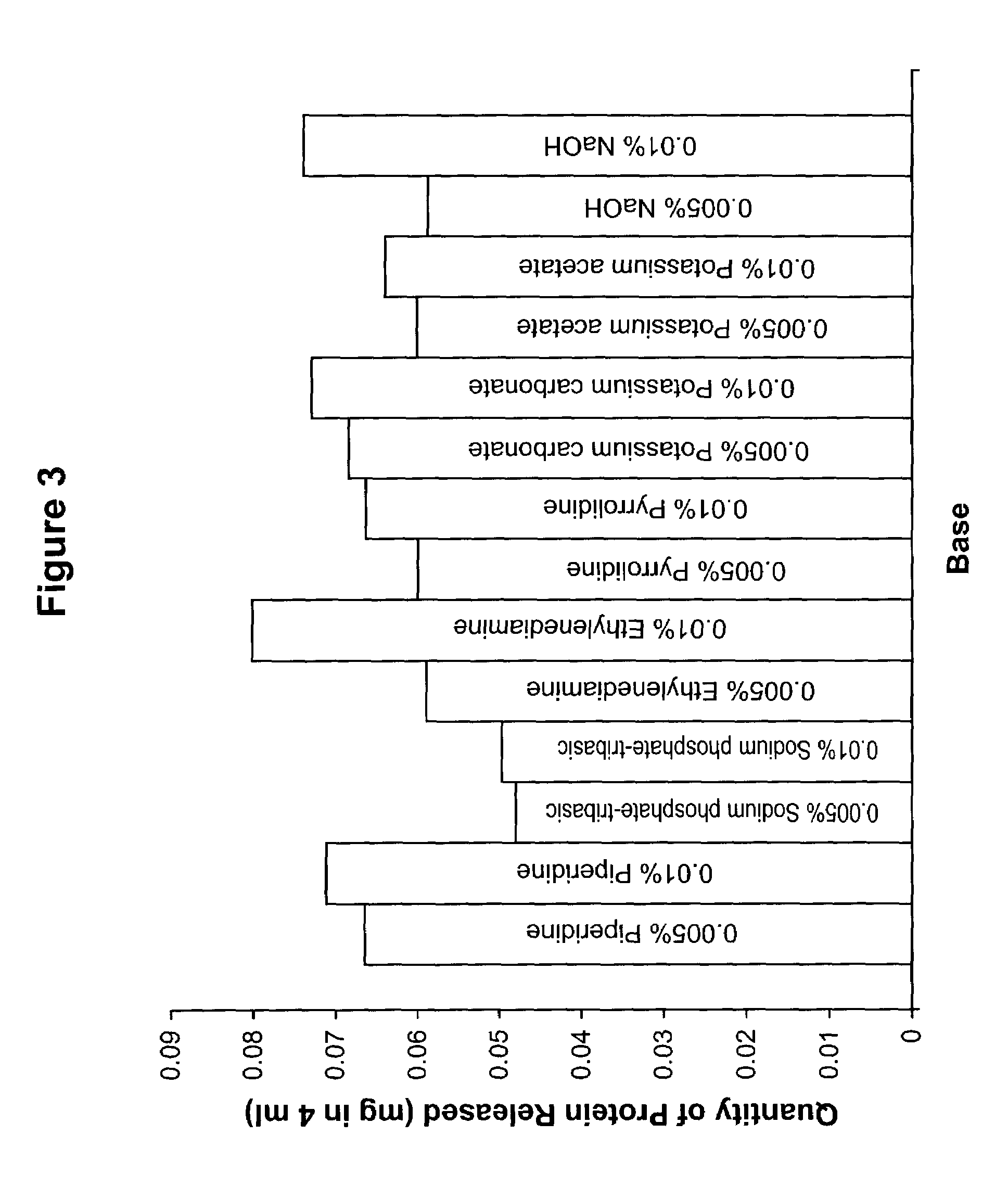Method and topical formulation for treating skin conditions associated with aging
a skin condition and topical formulation technology, applied in the direction of aerosol delivery, impression caps, application, etc., can solve the problems of many cosmetic and pharmaceutical agents, pharmacologically effective, and may be much less effective or even totally ineffectiv
- Summary
- Abstract
- Description
- Claims
- Application Information
AI Technical Summary
Benefits of technology
Problems solved by technology
Method used
Image
Examples
example 1
[0112]An in vitro keratolysis study was performed to compare the capability of glycolic acid and a base for removing protein from stratum corneum. Adult foot callus was collected, grounded and the portion between 50–80 mesh was used. Glycolic acid and sodium hydroxide solutions (concentration =0.05 M) were prepared in distilled water. Ten mg of ground callus powder was place in a test tube. Four ml of a test chemical was added to the callus and the test tube was placed in a shaker and incubated in a water bath at 37° C. for a predetermined incubation time. The incubation time periods were 10 min., 40 min, 2 hours, 4 hours, 6 hours and 24 hours. Six samples of each base were tested a total of six times each at each of the aforementioned incubation time periods.
[0113]At the end of each incubation period, the test tube was removed from the shaker and the test tube was centrifuged. The solution was removed and filtered, and the protein in the solution was then determined using a BioRad®...
example 2
[0116]The procedure of Example 1 was then repeated to compare the capability of glycolic acid with respect to a number of different bases, including both inorganic and organic bases, with respect to removal of protein from stratum corneum. The results are shown in Table 2 (for the ten-minute incubation period) and FIG. 2.
[0117]
TABLE 2Quantity of Protein Released Using Different Bases(Incubation Time = 10 minutes)Amount of Protein Released (mg / 4 ml)NaOH0.544Glycolic Acid0.187Diethanolamine0.144L-tryptophan0.170Arginine0.1532-amino-1-butanol0.174Betaine0.144Water0.138
[0118]The results indicated that 0.05 M NaOH solutions released more protein when compared to glycolic acid, other bases tested at the same concentration and water control. However, glycolic acid did and other bases did not show significant differences in comparison with water.
example 3
[0119]The procedure of Example 1 was then repeated with additional bases, all of which are listed in Table 3 (concentration=0.005% and 0.01%), using an incubation time period of 40 minutes. The results are shown in the following Table 3 and FIG. 3.
[0120]
TABLE 3Quantity of Protein Released Using Different Bases(Incubating Time = 40 minutes)Amount of Protein Released (mg / 4 ml)0.005%0.01%Piperidine0.0660.071Sodium phosphate-tribasic0.0480.050Ethylenediamine0.0590.080Pyrrolidine0.0600.066Potassium Carbonate0.0680.073Potassium Acetate0.0600.064NaOH0.0590.074
[0121]The results indicate that solutions of bases listed in Table 3 released about the same amounts of protein at 0.005% and 0.01% concentrations. The quantity of protein released was very small when compared to the data obtained in Examples 1 and 2 at a higher concentration of base.
PUM
| Property | Measurement | Unit |
|---|---|---|
| incubation time | aaaaa | aaaaa |
| incubation time | aaaaa | aaaaa |
| incubation time | aaaaa | aaaaa |
Abstract
Description
Claims
Application Information
 Login to View More
Login to View More - R&D
- Intellectual Property
- Life Sciences
- Materials
- Tech Scout
- Unparalleled Data Quality
- Higher Quality Content
- 60% Fewer Hallucinations
Browse by: Latest US Patents, China's latest patents, Technical Efficacy Thesaurus, Application Domain, Technology Topic, Popular Technical Reports.
© 2025 PatSnap. All rights reserved.Legal|Privacy policy|Modern Slavery Act Transparency Statement|Sitemap|About US| Contact US: help@patsnap.com



